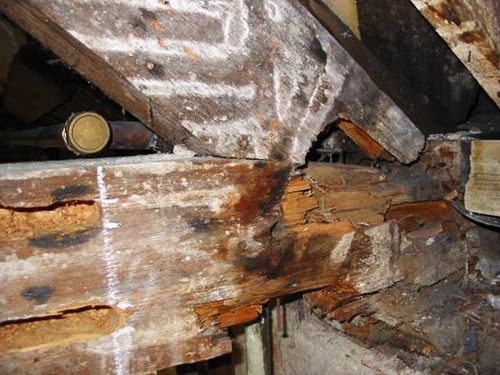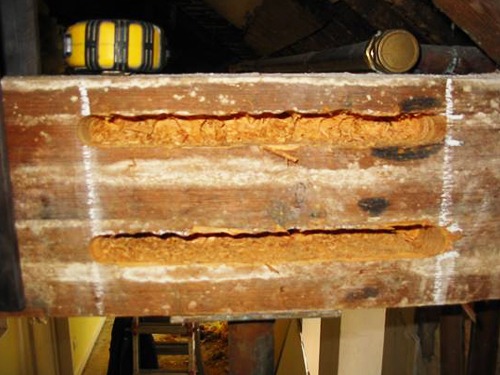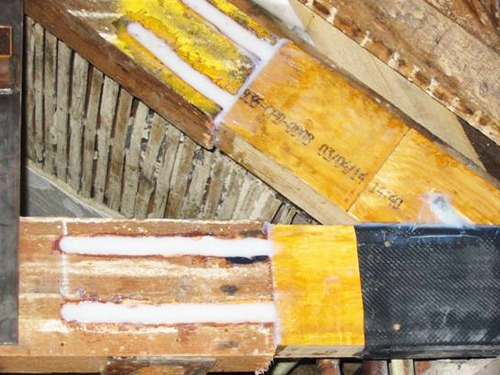It is important to have a prevention strategy for both Dry & Wet Rot.
Once untreated timber becomes damp and is allowed to remain in that condition, it can be attacked by any of the multiple species of wood rotting fungi. The terms Dry Rot and Wet Rot are used to describe fungal attacks on timber in buildings.
What are the Signs of Dry & Wet Rot?
There is only one true Dry Rot: Serpula Lacrymans.
It is in itself a contradiction in terms; initially the fungus will only occur in moist conditions where both the wood and atmosphere are damp.
The name Dry Rot is due to the fact that this fungus can germinate at a lower moisture content than Wet Rot. The decay caused by Dry Rot fungus renders the timber dry and brittle, causing it to crumble easily into powder. It has the ability to transport water and cause decay in otherwise dry timber.
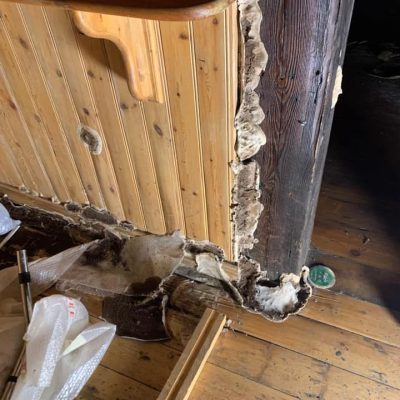
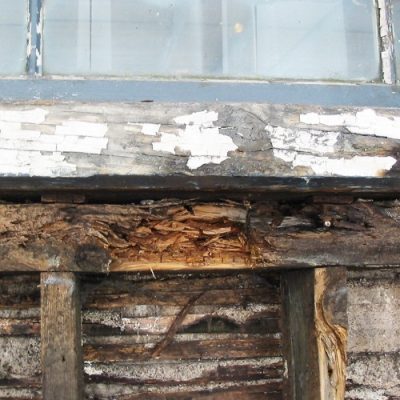
Meanwhile, there are a number of fungal species collectively known as Wet Rot. In general, Wet Rot is more localised than Dry Rot and requires a sustained higher moisture content. The most common form of Wet Rot is known as Coniophora Puteana or Cellar Fungus. It sends out strands superficially over damp plaster and brickwork. However, it requires much more moisture to do so and is therefore considered to be a ‘local’ fungus.
As Specialists in the Treatment and Repair of Wood affected by fungal attacks, we have Fixed both types of Wood Rot issues in Multiple Homes and Office settings throughout the Country.
Can Dry Rot & Wet Rot be Fixed?
We offer our clients a full range of services. Including a comprehensive survey to identify the damp source and infected areas, treatment of those areas, resin repair of affected timbers and a full reinstatement of finishes.
A typical treatment involves considerably more work than the simple spraying of timber with a wood preservative. The following is required to fully eradicate a fungal attack. A comprehensive scheme of chemical treatment along with a carefully detailed programme of associated building work.
The Wood Rot treatment is extended in all directions from areas of known infestation. With the extent of the treatment being governed by the detectable growth of the fungi and the pattern of moisture present which supports the spread of the attack. It is essential that the remedial building work includes the rectification of the entry of moisture responsible for the attack. Along with the replacement of any structurally weakened timber with chemically treated timber.
For a more in-depth summary on our treatment methods, please visit the ‘Before, During & After Project Summary’ section of our Latest News page.
If you suspect that you have a Wood Rot issue, please Contact Us today!
Phone: +353 42 974 1495
Mobile: +353 87 243 2564
Email: info@mcguinness.ie
